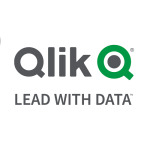Its easy to use, fast to develop. Quite easy to also add C# or other code into ETL flow. Transfer to production is much faster than for example with IBM Infosphere Datastage, you can just copy the packages. Haven't found bugs much at all. Its license cost is also quite cheap compared to IBM and Informatica offerings. Overall when choosing a new ETL software I would look into SSIS or one of the open source tools.
-If you want to connect to SAP for example you have to buy add-in from other company and the same applies to many other sources.
-It doesn't have a built-in version control, so you have to get that from other vendors too (so it lacks support for multiple developers).
-Visual studio crashes sometimes.
-Doesn't have good ELT functionality, though ofcourse one can just do SQL.
-Overall there's many small things that could be done to make development faster and the product is not definitely perfect, but one has to compare to offerings of other vendors, which are not 'perfect' from usability and performance standpoint eather.
Been using it for 5 years now.
Scalability not on the same level as with IBM Datastage.
Many customers are switching from IBM Datastage to SSIS. Think its the ease of use and license costs.

















Curious people's experiences when they mention "fail a lot" or scalability. I've used many ETL tools in my career - most of them very expensive and I'd put SSIS up against any of them for reliability and performance (within limits).
Scalability is largely comparing to expectations and it depends on your expectations. I think people too often compare completely different architectures and are surprised when they scale differently. SSIS is single server. No MPP going on here folks. You get a lot more than you've paid for (which is really nothing is you already own SqlServer). SSIS sure beats the open source stuff I've seen out there that really sucks. Try Pentaho written in Java if you want slow. I've read where people have custom coded front ends to fire multiple SSIS servers and there's ways of partitioning data flows but if you are getting into that you might be on the wrong tool. Consider the opposite - most people are running SSIS on the target database box so its competing with the database server as well as not utilizing more than one server. I'm doing that and actually getting quite great performance (again - its all about expectations).
So yes if you need millions per second SSIS is not the tool you want. My benchmark with SSIS is @10,000 rows per second to stage large rows through a data flow. I'm guessing if you need a lot faster than that you have significant volumes and big pockets so why would you look at a free tool that's designed to be installed on a database server?
As for failing, it would only fail due to buffers if you did something with altering buffers that you should not have done. That would be your bad sorry. Or you're doing something else silly like running on 4gb VM and didn't set a max memory on the Sql Server so basically everything crawls or fails. Hey - some of you are laughing but some are probably scratching their heads and asking, so what's wrong with that?